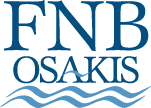
Growing a family is something that is rewarding on many levels, most of which cannot be measured. If you’re expecting, or planning on growing your family, congratulations! It’s not a small decision to make, and although you may never feel like you’ve truly done enough to be fully prepared, starting early on a budget, and practicing it, will help you considerably when your child is born.
For starters, the cost of child care can vary widely, and at times can be rather unpredictable, but taking steps to understand the predictable pieces will make the costs all the easier to digest. According to a 2017 USDA article regarding the costs associated with raising a child to the age of 18 puts a total cumulative amount at about $235,000. So, if we’re talking about digesting costs, that $235,000 figure is a tough one to swallow, but can be managed with a few financially savvy tactics.
If you’re simply planning on growing your family, starting early to set up accounts to cover initial, up-front costs is a great way to absorb the financial blow. Many people opt for a health insurance plans that allows for a Health Savings Account. These accounts can have funds contributed with “before tax” monies, and withdrawals from the account for medical purposes also come out tax free. These accounts can grow at a much faster rate than a traditional savings account, as the funds can be invested at a certain level. Furthermore, since the contributions are pre-tax, the payments made to medical bills (of which you’ll have plenty) will cost you less than if you were to pay it with post tax dollars. For the 2019 tax year, you’ll be able to contribute $3,500 for an individual, or $7,000 for a family. Nevertheless, having an account like this with at least your deductible amount in it, should be a goal to hit prior to the birth of the child when opening the account.
Setting that up will cover the cost of the hospital stay and the birth of the child, but what about when you bring that child home? Just like that, there’s another mouth to feed, and with food comes dirty diapers. There are clothes that’ll be needed, sleeper outfits, rockers, changing tables, bassinets, cribs, blankets, wipes, bottles…. The list can go on and on and is different with each family. A lot of those items are needed regardless, so buying them ahead of time when you see sales is very important, as you’ll want everything setup before the child is born. You certainly don’t want to have the child home, only to not have a place for it to sleep, or a bottle to add milk or formula to. Baby showers are a great way to gather items for the expecting couple and will significantly reduce the costs on your end to gather all these items.
Now that you’re comfortable with the child being home, and the child’s room is setup, you’re ready to cover regular day-to-day expenses. These include, diapers, wipes, formula (unless you’re able/plan to breastfeed) and a good stock of baby dish, bath and laundry soap. Diapers vary a bit on price depending on brands, but expect to pay about $20 for 120 diapers. This may sound like a lot, but that child could very easily dirty a dozen diapers before bedtime. At that pace, you’re looking to spend a solid $100 per month just on diapers and wipes. Feeding the child is another item to budget for, unless you’re breastfeeding. Formula fed babies, on average, cost just under $1,800 through their first year when fed formula. This is an additional $150 per month to add to your budget, for a total of $250 a month in just food and diapers/wipes.
If you’re both planning on going back to work, you’ll then need to factor the cost of daycare. Daycare costs will certainly vary widely depending on where you’re from, but you can certainly expect to pay $150 per week on daycare for an infant. That’s another $600, on top of the $250 you’re already spending from the aforementioned expenses, that needs to be considered. Your daycare provider may have different expectations with feeding, but you’ll typically need to provide them the breastmilk or the formula to feed your child, along with diapers and wipes.
A final point that we feel is an important one to cover is the cost of post high school education. Who knows whether or not your child will attend college, but preparing for it early on will allow you to provide a larger portion towards your child’s education expense. A great tool for this is a 529 Plan. There are many avenues to explore to set this up, but each state should have their own program, along with ones offered through financial companies. These accounts act similarly to a retirement account, where the power of compounding interest can really help that account grow. You’ll also receive tax benefits for utilizing the account. On top of all those benefits, it’s an account that anyone can contribute to, which makes it a great option for birthday or holiday gifts for friends and relatives.
So, when trying to fund a Health Savings Account, covering the cost of diapers, wipes and formula, toys and clothes, daycare costs and tucking money away for future education expenses, it’s pretty easy to see what that $235,000 cost over 18 years is made up of. Taking steps early on to save and experience that budget will absolutely benefit you as you bring your wonderful child into the world.
Lastly, this is not intended to be an entirely comprehensive plan on how to budget for a child, but does cover a lot of expenses of what you can expect. Each family is different on budgeting goals, so this should simply be looked at as a guide to help put a healthy and conservative perspective on the cost of a family.

